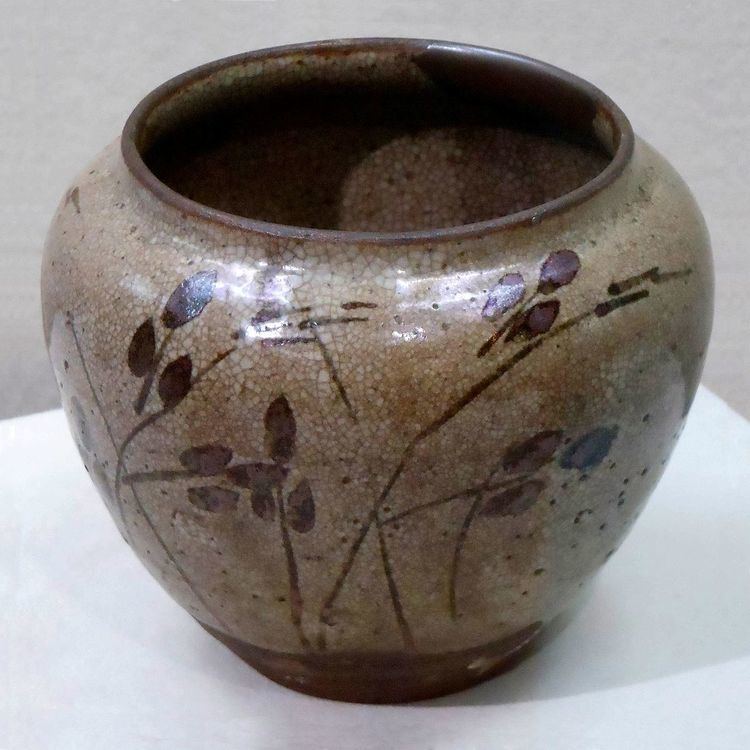 | ||
Karatsu ware (唐津焼, Karatsu-yaki) is a style of Japanese pottery produced traditionally in and around Karatsu, Saga Prefecture.
Contents
History
Karatsu has been a hub of foreign commerce and trade since ancient times, and a center of pottery production since the Azuchi-Momoyama period. Today there are many kilns in use as well as ruins of kilns scattered throughout the area in Saga Prefecture. The pottery style draws its name from the location where it is produced.
The techniques used in creating Karatsu ware are believed to have been imported from the Korean peninsula during the Japanese invasions of Korea during the late 16th century,though some theories suggest the techniques may have been in use prior to this period.
Karatsu ware was originally created for everyday use items such as tableware, pitchers, and other household items. The style is considered a good example of the wabi-sabi aesthetic, and Karatsu ware bowls, plates, and other implements are often used in tea ceremonies. Pottery in general is often called "Karatsu ware" in Western Japan due to how much pottery was produced in the Karatsu area.
There is a famous ancient saying—First Raku, second Hagi, third Karatsu—when referring to ceramic ware used for the Japanese tea ceremony. It is considered one of the top styles of pottery for use in tea ceremonies in Japan.
Characteristics
There are several variations produced in surrounding areas: Takeo Kokaratsu ware (produced in the adjoining city of Takeo), Taku Kokaratsu ware, and Hirado Kokaratsu ware. There are also varieties based on style: Painted Karatsu, Mottled Karatsu, and Korean Karatsu. Karatsu ware is known for its sturdiness and simple style; and is considered a traditional Japanese handicraft.
Fired in climbing kilns, Karatsu ware is made from a clay high in iron and can be undecorated or decorated with an iron-based underglaze, giving an earthy, simple, and natural feeling to the pieces.
A variety of styles of Karatsu ware exist.
